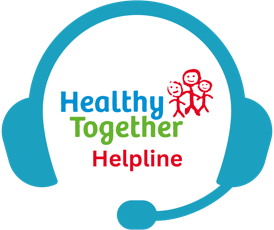This toolkit was developed in response to the SEND and Alternative Provision (SENDAP) Improvement Plan, a Department for Education initiative aimed at improving support for children and young people with special educational needs and disabilities (SEND). A key focus of this plan is the Early Language Support for Every Child (ELSEC) Pathfinders, which funds new approaches to better identify and support children with speech, language, and communication needs (SLCN).
Why this toolkit?
This Early Years toolkit is designed to equip early years staff with the knowledge and confidence to identify communication difficulties, and effectively support children at the universal and targeted levels. It also provides guidance on when an onward referral to Speech and Language Therapy is needed. This toolkit is a central resource which sits within a wider framework of training and support. We recommend all staff access this toolkit, as it is a part of your continued professional development.
Introduction to the toolkit
This Toolkit is based on the Balanced System Model (Gascoigne, 2008-2015) which outlines three levels of support to meet children SLCN:
- Universal Level – all children should be supported with their speech, language and communication skills through meaningful interactions, and whole-setting approaches. This level also includes being able to identify emerging communication needs.
- Targeted Level – some children will require additional targeted support to help their speech, language, and communication skills to develop. These children may be included in individual or group interventions, delivered by staff in their early years settings. These are children who continue to have SLCN even with universal strategies in place.
- Specialist Level – a few children may require specialist support to make progress. These children are likely to be known to the Speech and Language Therapy service and receive support in the form of an assessment, advice/recommendations, or intervention. These are children who continue to have significant SLCN after targeted interventions have been used to support.
How to navigate this toolkit
Why speech, language, and communication matter
Within the Early Years Foundation Stage Statutory Framework (2024), there are three prime areas which are particularly important for learning and forming relationships:
- Communication and language
- Physical development
- Personal, social and emotional development
Practitioners also support children in four specific areas:
- Literacy
- Mathematics
- Understanding of the world
- Expressive arts and design
The development of children’s spoken language underpins all seven areas of learning and development.
Speech, language and communication skills are vital for children to succeed in life:
- Leadership
- Professional development
- Promote universal strategies
- Early identification of SLCN
This toolkit will provide you with a greater understanding of speech, language and communication; provide advice and recommendations for universal support, and screening tools for identification of SLCN.
Toolkits
Definitions
- Speech= the sounds we use in words.
- Language= the words we understand and use. This can be receptive (understanding spoken language) or expressive (producing spoken language).
- Communication= An umbrella term referring to the sharing of information, including through non-verbal means (e.g. symbols / gesture etc.).
- SLC/ SLCN = Speech Language and Communication/ Speech, Language and Communication Needs.
- SLT/ SaLT= Speech and Language Therapist.
- Parents/ carers = parents and those who care for the child.
- Early Years (EY) Practitioner = staff who look after the social and educational development of 0-5 year olds (including childminders).
- Key Person/ Worker = the EY Practitioner assigned to the child, who monitors their progress.
- SENCO = Special Educational Needs Coordinator. The member of staff who is specially trained to identify and address special educational needs.








